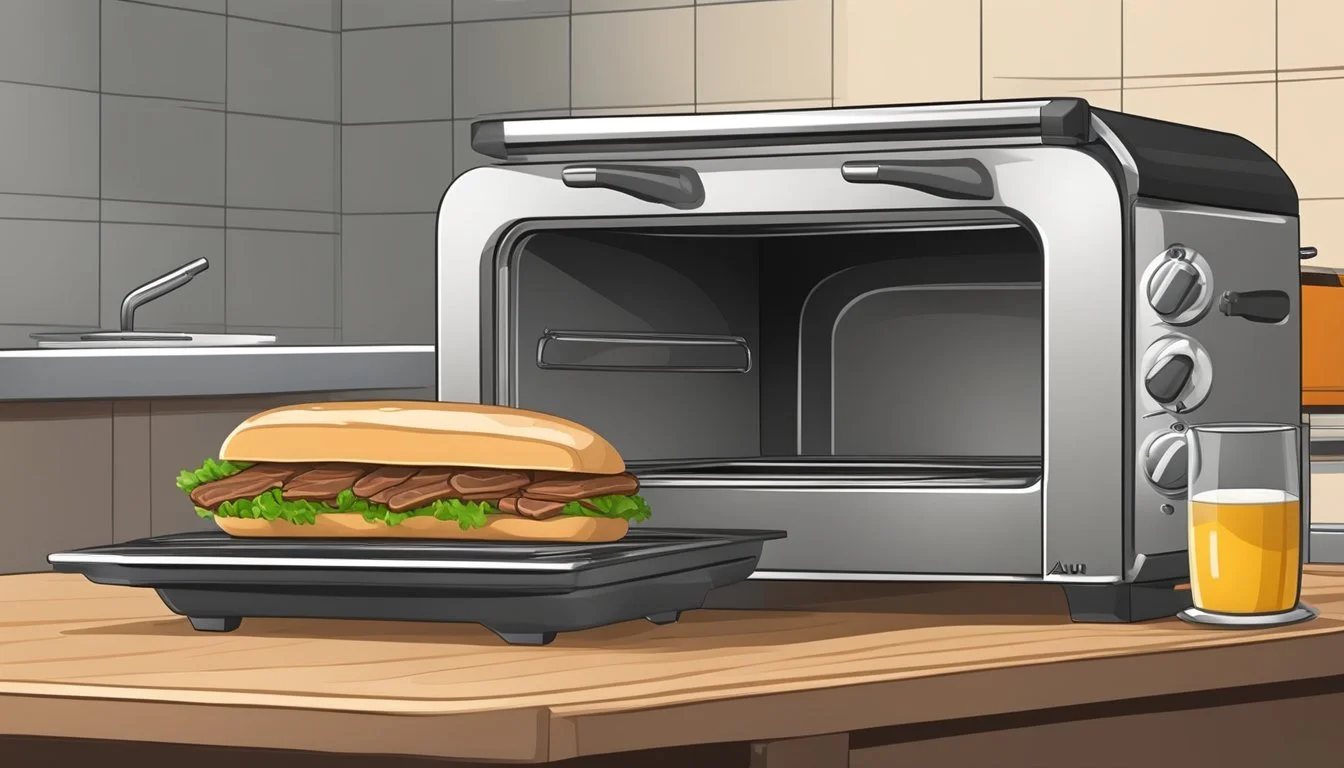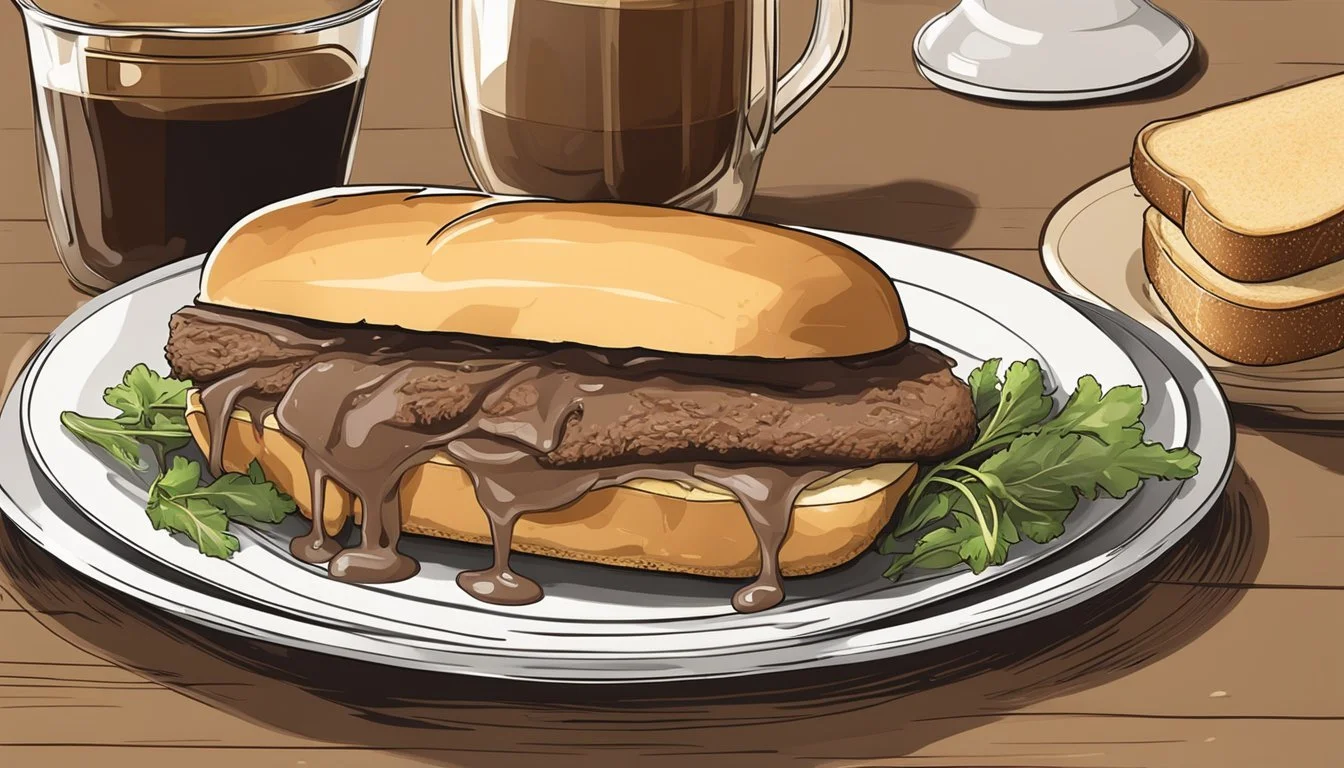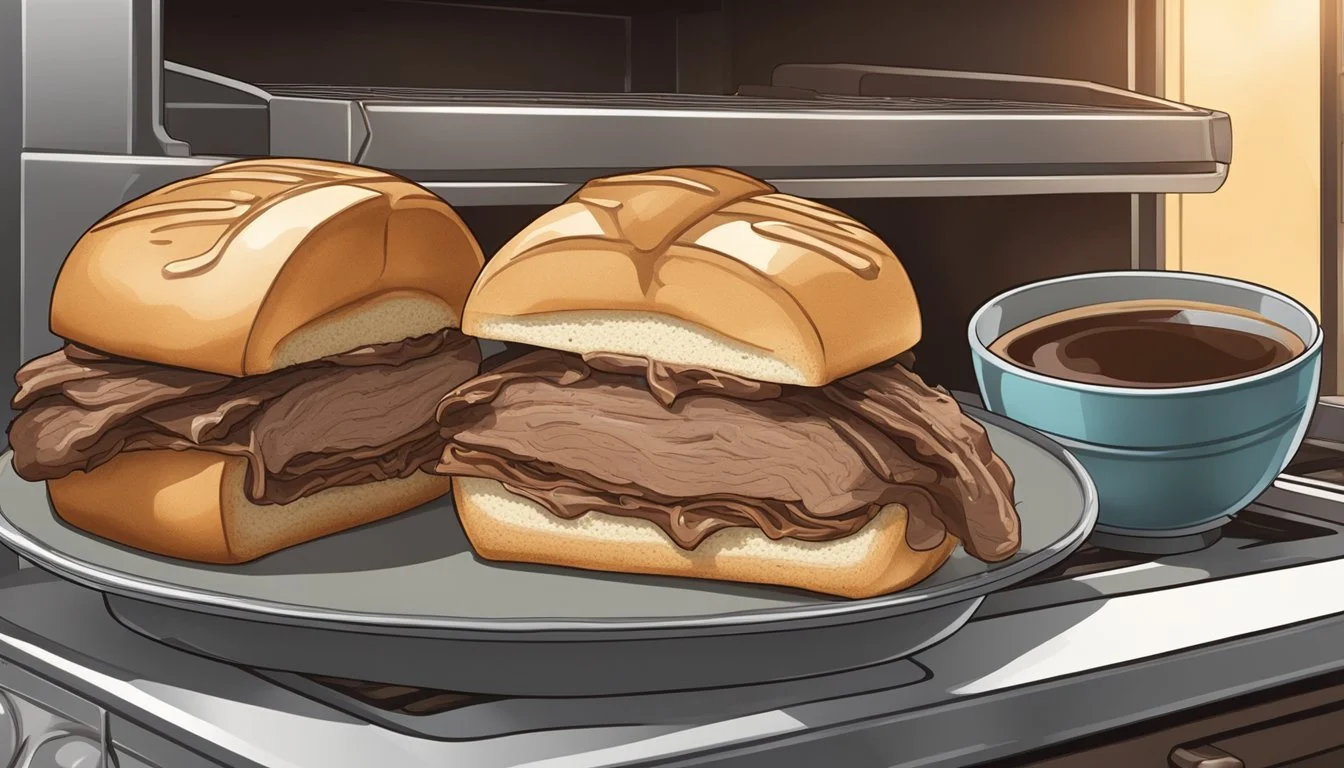Best Way to Reheat a French Dip Sandwich
Ensuring a Perfectly Juicy and Crisp Experience
Reheating a French dip sandwich properly is key to preserving its signature taste and texture. The delicious combination of juicy meat and crusty bread (What wine goes well with bread?) can become a soggy disappointment if not reheated with care. To ensure the sandwich retains its intended flavor profile and texture, specific reheating methods should be employed. The goal is to maintain the succulent quality of the meat without compromising the crusty exterior of the bread, an essential element that elevates the French dip experience.
Oven reheating is often recommended for French dip sandwiches (What wine goes well with sandwiches?). When using an oven, the sandwich is wrapped in aluminum foil to lock in moisture, and it's gently heated through to avoid drying out the meat or letting the bread become tough. This slow and steady approach ensures that the sandwich is warmed evenly, preserving the tender bite of the beef and the crispness of the bread crust. The use of a preheated oven at a moderate temperature, such as 350°F, aids in reviving the sandwich to its near-original state, allowing the flavors to remain robust and the textures satisfying.
Alternatively, an air fryer can be a swift solution to reheat a French dip sandwich. This method uses rapid air circulation to effectively restore the crusty exterior of the bread while still being gentle enough to keep the meat juicy. The air fryer's quick heating capability can replicate the sandwich's fresh taste and texture, making it an efficient option for those looking to enjoy their meal without a lengthy reheating process. Whichever reheating technique is chosen, the primary focus remains on sustaining the quality of the iconic French dip sandwich.
Understanding the French Dip Sandwich
The French Dip Sandwich is a culinary delight that strikes a balance between juicy meat, crusty bread, and flavorful au jus. Achieving the perfect harmony of these elements is essential when reheating the sandwich.
Key Components of a Classic French Dip
Meat: Traditionally, the meat used is thinly sliced roast beef, which is known for its tenderness and rich flavor. The beef is the star of the sandwich and is often cooked to a perfect medium-rare to medium state.
Bread: A crusty French roll or baguette forms the foundation of the sandwich. It provides not only the satisfying crunch but also the structural integrity to hold the ingredients and soak up the au jus.
Au Jus: The term 'au jus' refers to the natural juices collected from the meat as it cooks. This liquid is typically enhanced with herbs and spices and is served on the side for dipping.
Importance of Preserving Texture and Flavor
Maintaining the right texture and flavor is paramount in a French Dip Sandwich. Here’s why:
Texture: The bread should remain crusty on the outside, while the interior becomes only slightly softened by the meat's juices, not soggy. On the other hand, the beef should retain its moisture and tenderness through careful reheating.
Flavor: Every ingredient brings its own flavor profile, which must be preserved. The meat must stay savory, the bread must uphold its toasty aroma, and the au jus should keep its intensity and depth. They all must unite to deliver the classic taste of a French Dip.
Preparing the French Dip for Reheating
Proper preparation is essential when reheating French dip sandwiches to maintain the succulence of the meat and the crustiness of the bread. Following steps ensures the sandwich is reheated without compromising taste or texture.
Handling Leftovers Properly
One should store leftover French dip sandwiches in the refrigerator within two hours of cooking to preserve their quality. If the sandwich was refrigerated, it is ideal to consume it within 3-4 days. For the best texture, wrap the sandwich in aluminum foil or store it in an airtight container to protect it from absorbing unwanted flavors or drying out. If the French dip sandwich is frozen, it should be properly sealed in freezer-safe wrap to prevent freezer burn.
Thawing and Initial Preparation
Prior to reheating, one must thaw frozen French dip sandwiches in the refrigerator overnight for optimal results. Refrigerated or thawed sandwiches should be carefully unwrapped, and any soggy bread should be noted as it may require a shorter reheating time to prevent further softening. One must ensure that the sandwich is at a cool room temperature before proceeding to reheat, which promotes an even warming process.
Choosing the Right Reheating Method
When reheating a French Dip Sandwich, one must prioritize maintaining the meat's juiciness and the bread's crispiness. To achieve the best results, selecting the appropriate reheating method is crucial.
Oven Reheating for Optimal Crispness
Reheating a French Dip sandwich in the oven is the preferred method to retain the crusty texture of the bread. One should:
Preheat the oven to 350°F (175°C)
Wrap the sandwich tightly in aluminum foil
Place it on a baking sheet
Heat for 10-15 minutes
This method prevents the bread from drying out while ensuring the meat stays tender.
Skillet Method for Quick Serving
For those wanting a faster option, a skillet can be utilized effectively. Steps to follow are:
Heat the skillet on a medium setting
Place the sandwich in the skillet once it is hot
Cover with a lid to trap in moisture, reheating for a few minutes on each side
The skillet method works well for achieving a warm and evenly heated sandwich quickly.
Microwave Tips for Moisture Retention
The microwave is a last resort due to the risk of sogginess. However, if time is of the essence, one can:
Place the sandwich on a microwave-safe plate
Cover with a damp paper towel to retain moisture
Use a lower power setting to reheat the sandwich in increments, checking frequently
This ensures that the sandwich doesn't become too dry or too wet during the reheating process.
Safeguarding the Sandwich's Integrity
Reheating a French Dip sandwich requires careful balancing to maintain the juicy tenderness of the meat, the crustiness of the bread, and the proper melt of the cheese. Achieving the ideal internal temperature without compromising texture or moisture is key.
Maintaining Meat Tenderness and Juices
When reheating the meat, the goal is to preserve its tenderness and retain its juices. The meat should be removed from the bread and reheated separately to ensure an even, gentle warming. An oven or air fryer set to a moderate temperature of 350°F (175°C) can effectively reheat the meat without drying it out. Wrapping the meat in aluminum foil can help maintain moisture. Using a thermometer ensures that the meat reaches the proper internal temperature for food safety without overcooking.
Ensuring the Bread Stays Crusty
The bread is a crucial component of the French Dip sandwich, and its crust needs to stay crisp. Reheating the bread separately from the meat can prevent it from becoming soggy. If using an oven, wrapping the bread in foil for the majority of the reheating time and then exposing it to direct heat in the final minutes can crispen the crust while protecting its texture.
Preventing Cheese from Over Melting
If the sandwich contains cheese, it should melt slightly but not become overly runny. Care must be taken to add the cheese to the sandwich only after the meat and bread have been separately reheated. Placing the sandwich with the cheese back into the oven or air fryer for a brief period allows the cheese to reach its optimal melted state without compromising the sandwich's integrity.
Enhancing the Reheated Sandwich
When reheating a French dip sandwich, one can significantly elevate the experience by adding fresh toppings and ensuring the jus dipping sauce is flavorful. The reader finds that the balance of warmth from the sandwich and the punch of rich, aromatic condiments makes every bite more satisfying.
Adding Toppings and Condiments
Careful addition of toppings and condiments can bring back the fresh taste and textural contrast to a reheated French dip sandwich. One may consider:
Mayo: A light spread of mayonnaise on the cut sides of the bread can introduce a creamy texture.
Provolone Cheese: Adding a slice of provolone cheese lends a mild and slightly tangy flavor.
Caramelized Onions: They bring a touch of sweetness and a melt-in-the-mouth consistency, complementing the savory meat.
Garlic Powder: A pinch can enhance the overall taste with a gentle, earthy garlic note.
Oregano and Thyme: Sprinkling these herbs can inject a Mediterranean aroma that pairs well with the beef.
Perfecting the Jus Dipping Sauce
A flavorful jus is crucial to a French dip sandwich. It can be enhanced with the following:
Worcestershire Sauce: Incorporating a few drops adds a burst of umami and a slightly tangy essence.
Soy Sauce: Introducing a small amount can deepen the savory character of the jus without overpowering it.
Beef Consommé: Using beef consommé as a base provides a clear, strong beef flavor that is essential for an authentic jus.
Pepper: Freshly cracked black pepper adds spice and depth to the jus, inviting a subtle heat.
Olive Oil: A drizzle can contribute to a rounded, velvety mouthfeel.
By focusing on these enhancements, the sandwich is not merely reheated but revitalized, with every component playing a role in creating a symphony of flavors that resonate with the original culinary delight.
Alternative Reheating Methods
When reheating a French dip sandwich, it's crucial to use a method that maintains the sandwich’s crispy exterior and juicy interior without overcooking. Here are three alternative techniques aside from the conventional oven method.
Toaster Oven Technique
A toaster oven provides a quick and efficient reheating method, balancing crispiness and moisture retention. For best results:
Preheat the toaster oven to 350°F.
Wrap the sandwich in foil, ensuring the bread doesn't dry out.
Heat for about 10 minutes or until the sandwich is warm throughout.
Air Fryer Use for Speed and Consistency
An air fryer offers a speedy solution with consistent heating, ideal for maintaining a crispy crust.
Preheat the air fryer to 350°F.
Place the sandwich inside the basket without wrapping in foil; the circulating air will crisp the exterior effectively.
Cook for 4-6 minutes, checking periodically to prevent overcooking.
Stovetop Method for Control
The stovetop provides direct control over the reheating process:
Separate the meat from the bread.
Warm the meat in a skillet over medium heat, adding a splash of the dipping broth for moisture.
Toast the bread separately in another skillet or on a griddle until the desired crispiness is achieved.
By carefully managing the cooking time and monitoring the sandwich components, these methods help preserve the integrity of a French dip sandwich's traditional texture and flavors.
Post-Reheating Tips
After a French Dip sandwich is reheated, it should be served immediately for the best taste and texture. Proper storage of any leftovers is crucial to maintaining its quality.
Serving the Reheated French Dip
One should serve the reheated French Dip sandwich promptly to ensure that the meat remains juicy and the bread retains its crustiness. It is advisable to accompany the sandwich with a side of au jus for dipping, but one should be mindful of the sodium content in the au jus, especially if watching salt intake.
Storing Any Remaining Leftovers
If there are any leftovers, they should be stored properly to minimize the loss of flavor and texture. The sandwich should be tightly wrapped in aluminum foil or placed in an airtight container and refrigerated immediately. It's important to note that the saturated fat content in the meat may cause it to solidify slightly when chilled, but it will melt again upon reheating. Leftovers should be consumed within 3 days for optimum taste and food safety.





